Soon enough, near mid 2016, the arrival of another game changing set came to spotlight. The Idolm@ster Cinderella Girls received its second booster of support in April 2016. Unlike previous sets spoken on this historical series, Idolm@ster Cinderella Girls was able to make use of a good number of previous cards from its predecessor set.

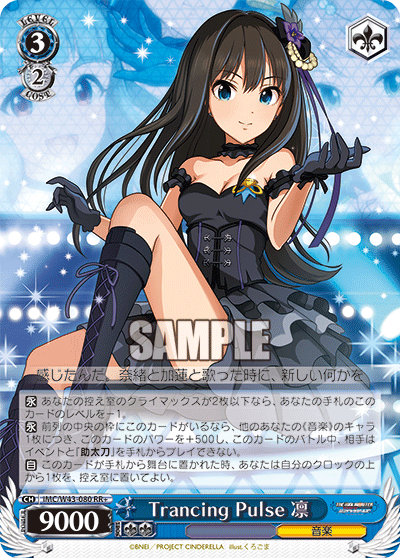
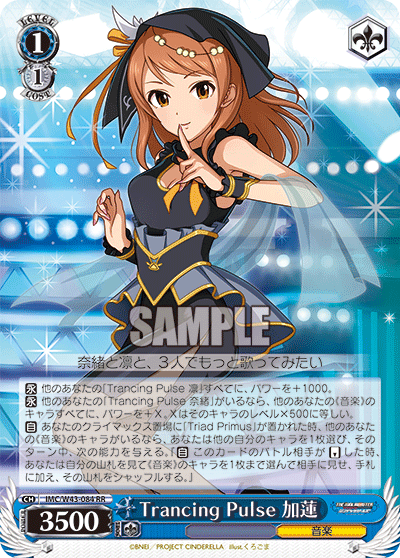
IMC/W43-080RR+ Trancing Pulse 凛 (center)
IMC/W43-084RR Trancing Pulse 加蓮 (right)
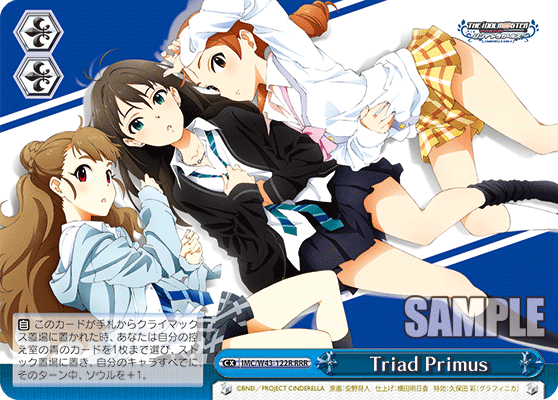
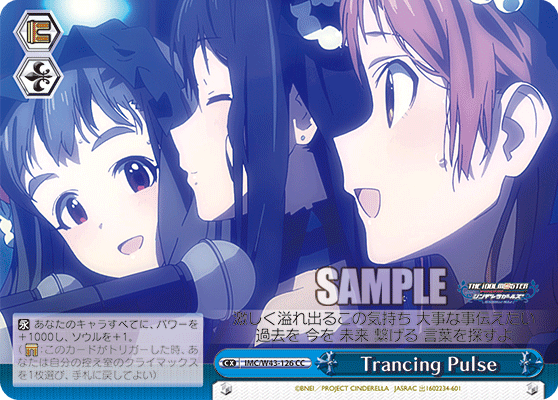
Similar to that of To-Love Ru, a dominant deck primarily appeared when it came to Idolm@ster Cinderella Girls listings. The deck is represented by the characters above with their respective climaxes.
The Trancing Pulse deck (named for the characters and their unit) was a formidable deck back in its prime. Trancing Pulse married both flavour and power together in perfect harmony. Nao and Karen assembled the backrow, acting as both the power pump and brainstorm for the deck. Near the middle of the game, the third piece of the trio came into play, Rin. Assuming she was at the center, from which her own effect would highly encourage, she carried both a healing ability and a large amount of power to dominate any opposing card.
Furthermore, Karen carried a combo which allowed the player to grant the Shimakaze ability to any Music (音楽) character of their choice, allowing one to be flexible in gaining hand advantage and set-up for their later turns.
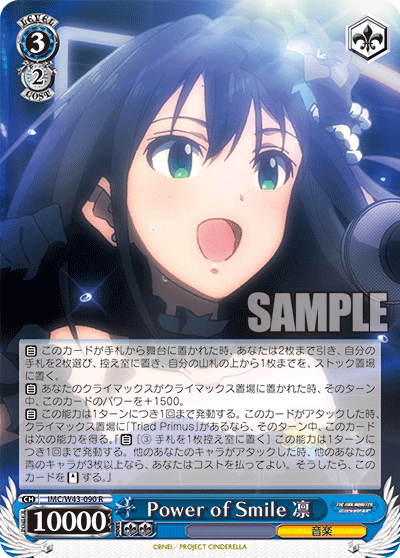
However, Triad Primus Rin wasn’t even the scariest card in the deck. The card shown above was the last piece of the puzzle, gaining the ability to re-stand itself with a relative free condition. If played optimally, the field would run two of these in the front row. This effectively allowed for up to five attacks in a turn, which, if it didn’t already send your opponent to level four, would either set them back harshly or put them on the brink of death.

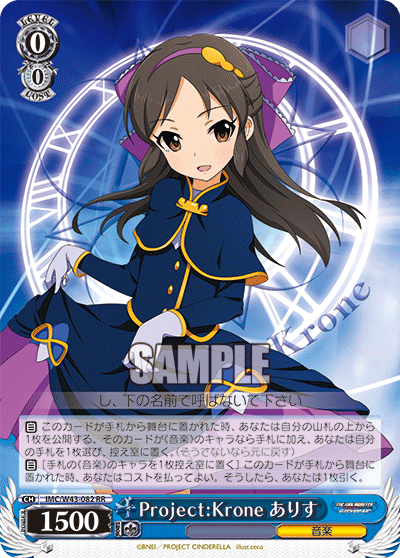
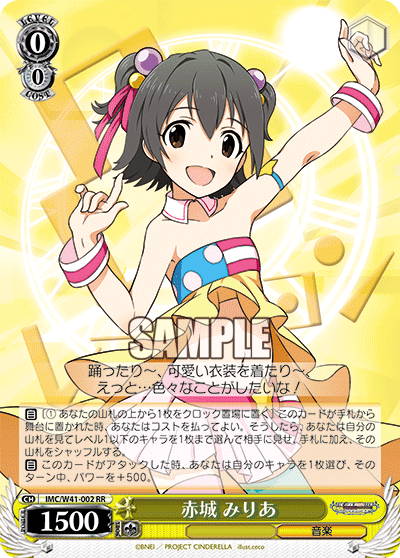
IMC/W43-082RR Project:Krone ありす (center)
IMC/W41-002RR 赤城 みりあ (right)
However, to make a deck strong, the deck must also carry high means of consistency and ways to filter/sculpt hand. The above cards were all ways in which the deck was able to grab the pieces it needed. All of the much wanted filter and hand fixing profiles wanted at the time were available to the set, already pre-existing mostly in the first set.
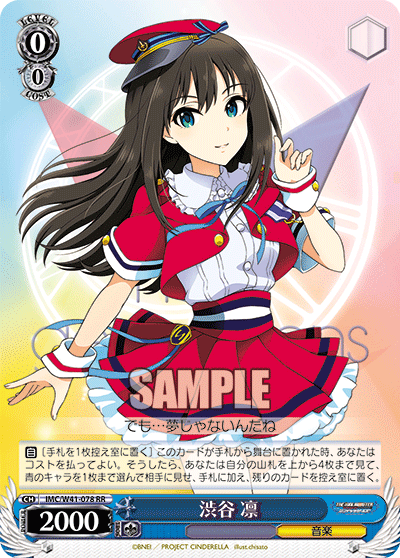

On top of having some of the best ways to filter and grab specific pieces to hand, the deck also had multiple mill options with the two above being the most common. The Akatsuki profile, as represented by Rin, was already a proven staple pretty much in any set that could run it. However, the set also introduced a card that was dubbed Koume. Koume essentially let you either mill the deck freely or potentially filter a climax to hand as needed, helping the deck set-up its combos as needed.
The Triad Primus deck was heavily hit after, seeing its primary combo dismantled with the limitation of Power of Smile Rin and the restriction of several other filter pieces including Koume. Unlike previous historical sets, this deck carries much importance in relying on old support. As such, future sets were also designed to be wary of the power of older cards if any could be used in conjunction with newer card support. Triad Primus set an example of what decks strived to have and carry: a strong end-game, powerful filters, consistent ways of free mill, and multiple ways to gain advantage.
A link to the deck in question can be found below:
Triad Primus